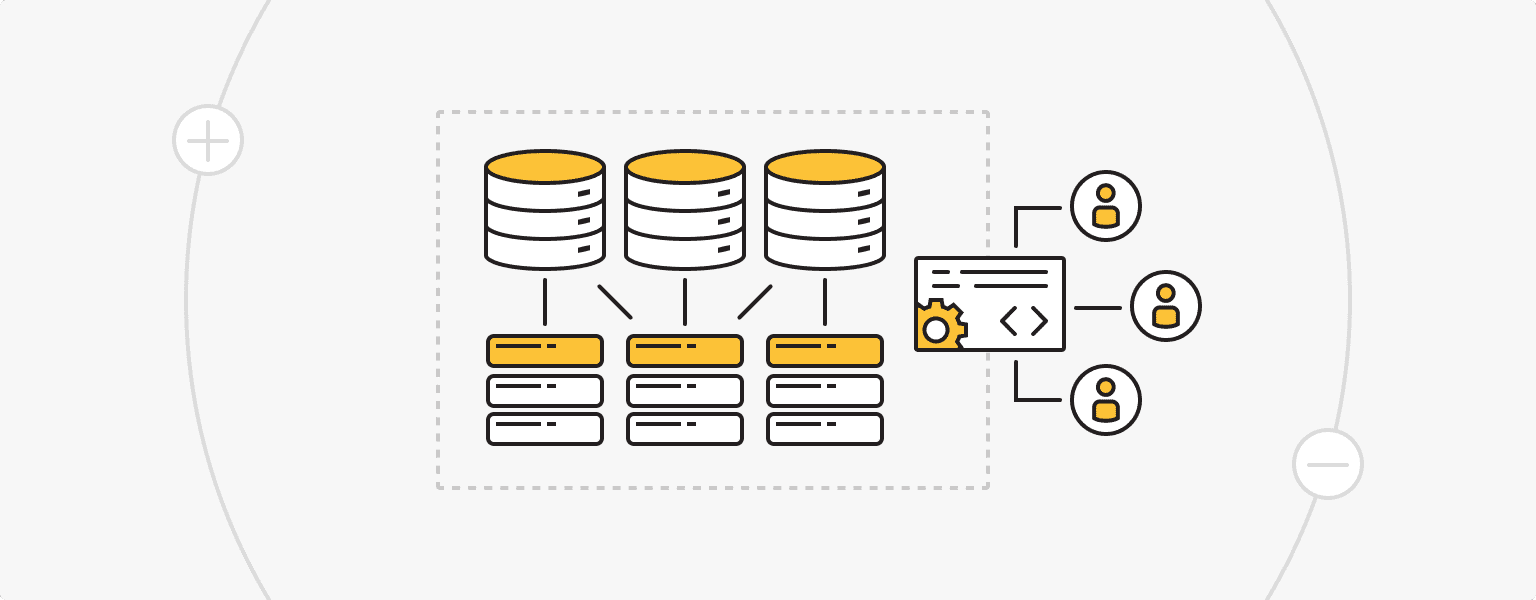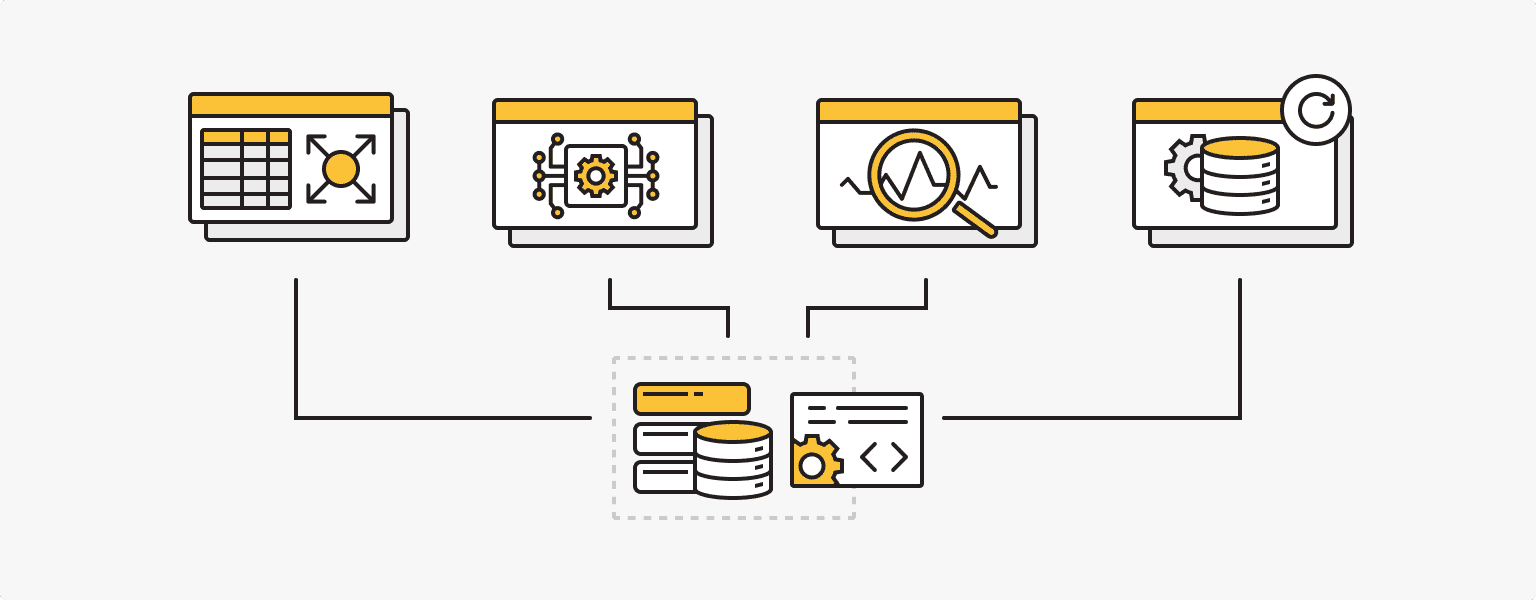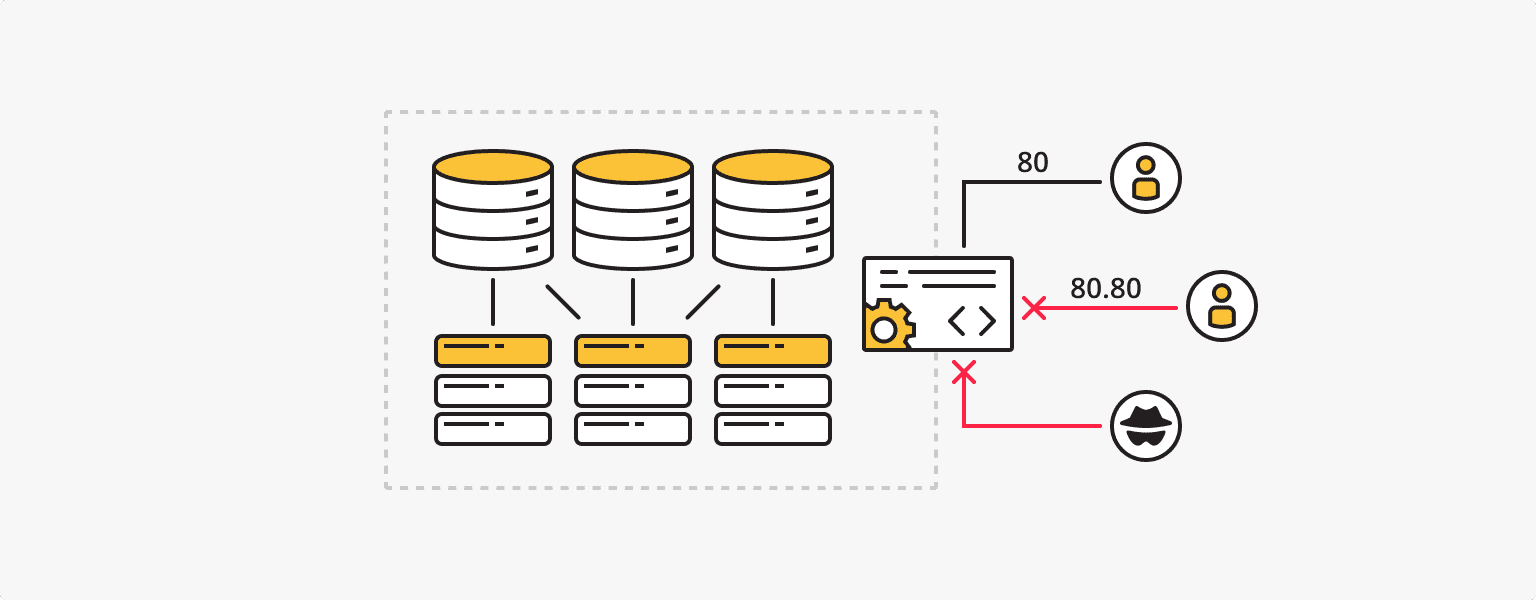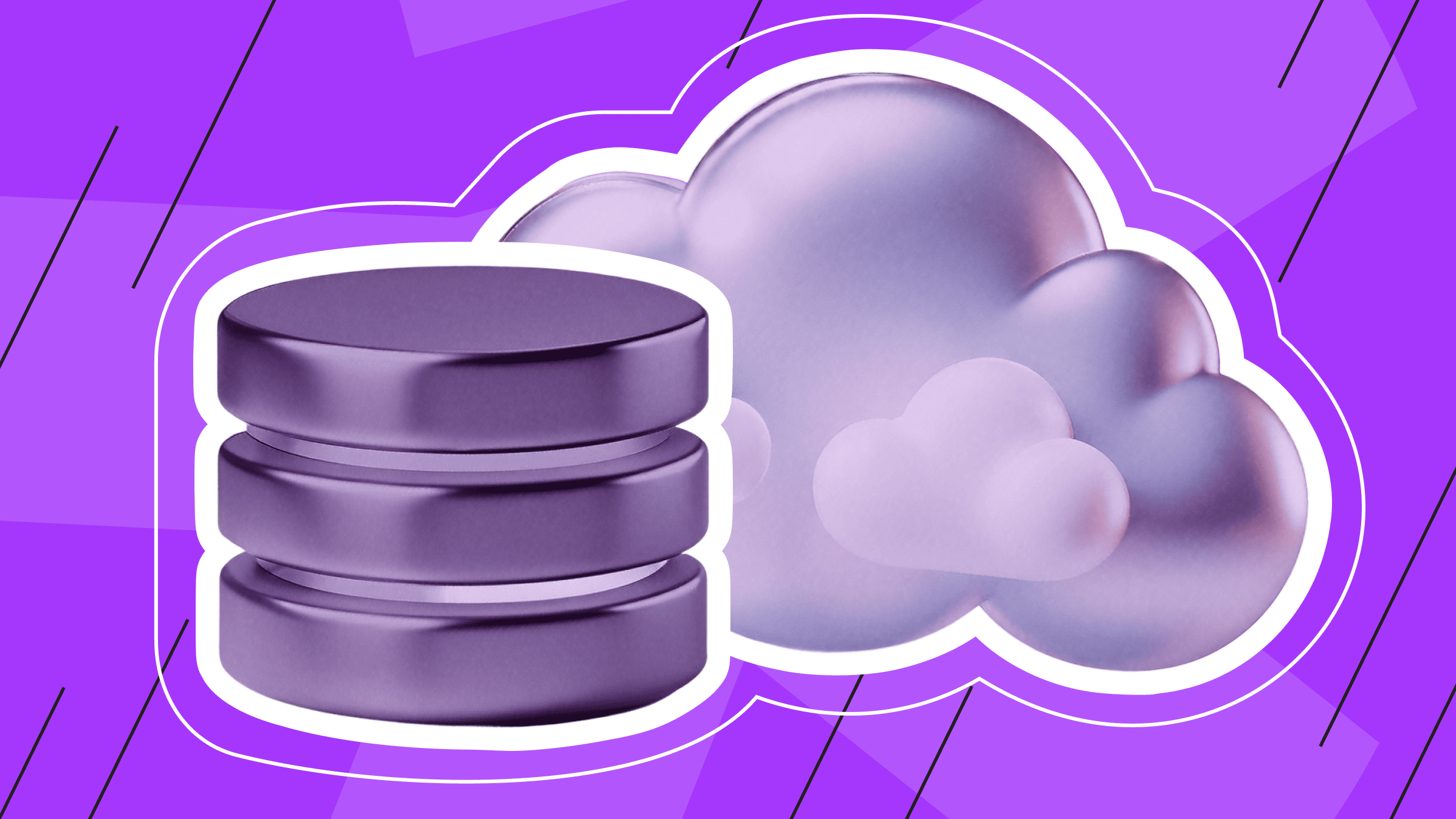
- What Is Software-Defined Storage and Why Is It Different from Other Storage Solutions?
- How Do You Manage and Optimize a Software-Defined Storage System?
- Which SDS Architecture Should You Choose: Hyperconverged or Converged?
- When Should You Use a Software-Defined Storage System
- How Do You Secure a Software-Defined Storage System?
- What’s the Difference Between SDS, NAS, and SAN for Data Storage?
- Conclusion
Data doesn’t politely wait for budget cycles. It grows right when your storage system decides to remind you who really owns your uptime. NAS and SAN still have their uses, but scaling them feels like paying protection money to hardware vendors — expensive, rigid, and designed for yesterday’s workloads.
In 2025, when AI pipelines, analytics jobs, and user data multiply faster than your monitoring alerts, you need storage that bends without breaking. That’s where software-defined storage (SDS) comes in: no forklift upgrades, no vendor lock-in, just a software layer that lets you scale sideways.
What Is Software-Defined Storage and Why Is It Different from Other Storage Solutions?
At its core, SDS is a software layer that decouples physical storage resources from the underlying storage devices. Instead of binding data directly to proprietary hardware, SDS leverages storage virtualization to create a flexible and cost-efficient data storage infrastructure.
Unlike traditional storage systems, like NAS and SAN, where changes to storage capacity or performance often require replacing entire physical storage resources, an SDS system makes scaling almost frictionless. You can add more disks, nodes, or even cloud-based capacity without rewriting applications or redesigning workflows. However, virtualization has drawbacks, so some organizations are reluctant to adopt SDS technology.
In short, software-defined storage solutions enable managing complex storage operations from a single interface, improving agility, and reducing costs. Isn't that an advantage that makes SDS the preferred approach to data storage in 2025?
What Are the Advantages and Disadvantages of a Modern SDS System?

Adoption of software-defined storage has spiked for one reason: it solves problems that keep sysadmins and DevOps awake at night. The gains outweigh the headaches, especially if you’re done paying tribute to overpriced hardware vendors.
Here’s what SDS actually gives you:
Flexibility in Hardware Choice
With SDS, you can run storage on dedicated servers or devices that are easier to upgrade or replace. This reduces reliance on vendor-specific arrays and makes physical storage resources more adaptable.
Scalability in Every Direction
Thanks to storage virtualization, SDS scales both vertically (adding more power to existing nodes) and horizontally (adding more nodes or disks) which makes managing storage resources a pleasant experience.
Cost-effectiveness
Because SDS abstracts the software layer from physical storage resources, you don’t need to invest in expensive traditional storage solutions. Instead, you can repurpose commodity hardware and expand only when needed.
Centralized Storage Management
A single dashboard powered by management and automation software lets admins control replication, backup, and monitoring.
High Availability and Disaster Recovery
SDS allows data to be replicated across multiple nodes or even geographic regions. In case of hardware failure or force majeure, recovery is faster and more reliable.
Multi-type Data Storage Support
A well-designed software-defined storage solution can combine block, file, and object storage in one unified system, streamlining data storage infrastructure across departments.
Dedicated Server
Dedicated hosting for those who need more power, control, and real stability.
But users of the software-defined storage technology point out some of the drawbacks:
Since SDS relies entirely on the software layer, performance and reliability depend on proper setup and monitoring. Improper configuration or insufficient monitoring results in degraded performance.
Deploying and maintaining an SDS system requires training in storage virtualization and automation. Lack of expertise can slow adoption.
By abstracting storage from hardware, SDS introduces new security considerations. Misconfigured management and automation software or unmonitored storage devices can become attack vectors.
How Do You Manage and Optimize a Software-Defined Storage System?

Deploying software-defined storage isn’t the finish line — it’s where the real work begins. Treating it like a “set and forget” solution is the fastest way to discover that your storage layer has turned into the weakest link in your infrastructure.
The first challenge is storage capacity planning. Guess too high, and you’re burning budget on hardware that sits idle. Guess too low, and you’ll be firefighting bottlenecks at the worst possible time. The balance comes from monitoring real workloads, projecting growth with hard metrics, and scaling deliberately, not reactively.
Management and automation software is the backbone of SDS, but it’s only as reliable as the way you configure it. Dashboards and alerts should reduce human error, not replace operational awareness. Watching IOPS, latency, and bandwidth in real time is how you catch problems before they become outages.
Backup and recovery strategies also change under SDS. Snapshots and replication across nodes or regions make disaster recovery far easier, but only if the policies are enforced and tested. Too many teams assume replication is happening because it was configured once; in practice, an unmonitored cluster can drift out of sync quickly. Security practices for data protection must remain tight as well.
Finally, vendor or community support is the quiet but critical part of SDS optimization. A stack that looks solid today can turn brittle if updates stop coming or the project’s community loses momentum. Checking the health of the ecosystem is as important as checking the health of your own cluster.
Which SDS Architecture Should You Choose: Hyperconverged or Converged?
Software-defined storage usually comes in two flavors: Converged Infrastructure and Hyperconverged Infrastructure.
Converged Infrastructure (CI):
- Structure: Compute, networking, and storage are separate hardware units tied together with a dedicated fabric.
- Performance: Strong throughput and predictable latency — good if your workloads are I/O heavy.
- Use case fit: Legacy applications, transactional databases, or environments where hardware specialization still matters.
- Trade-offs: Scaling is clumsy, vendor dependency remains, and flexibility is limited.
Hyperconverged Infrastructure (HCI):
- Structure: Compute, networking, and storage collapsed into a single software-managed layer.
- Scalability: Add nodes, scale out. Simple. No forklift upgrades.
- Use case fit: Cloud-native stacks, container orchestration, DevOps-heavy pipelines, and AI/ML workloads.
- Trade-offs: Relies heavily on software expertise — misconfigure it, and you’ve just promoted your cluster to Keter-class anomaly.
Which to Choose in 2025?
- Choose CI if you’re stuck with legacy systems or need bare-metal performance guarantees.
- Choose HCI if you want default choice for modern software-defined storage environments. Unless compliance or legacy constraints force you into CI, HCI will save you headaches.
When Should You Use a Software-Defined Storage System
Not every organization needs software-defined storage from day one. Check these cases to decide.
- SDS makes it easy to provision and manage virtual machines, desktops, and applications across hybrid or multi-cloud setups.
- If you’re analyzing customer behavior, market trends, or business drivers, SDS provides unified access to large volumes of data storage. Its centralized software layer makes analytics faster and easier to automate.
- Replication across multiple storage devices and regions ensures quick recovery during outages, making SDS a preferred choice for organizations where downtime equals financial loss.
- Some enterprises use software-defined storage solutions at the edge to process data locally while maintaining sync with central storage hardware. This ensures performance and resilience even in distributed environments.
How Do You Secure a Software-Defined Storage System?

Security is where SDS either holds up under pressure or becomes a very expensive incident report. Because SDS shifts control into the software layer, misconfiguration isn’t just possible — it’s inevitable without discipline.
- Limit root/admin rights to the smallest possible group. Every action should be logged and monitored — not buried in a log server that no one checks until after the outage.
- Data at rest, in transit, between nodes — encrypt everything. Anything less is an open invitation to data exfiltration. Baseline: TLS for traffic, AES for storage.
- Automate vulnerability scans, and don’t rely on vendor emails to tell you when you’re exposed.
- Validate every request, isolate workloads, and segment storage resources. If one node is compromised, the blast radius should be measured in gigabytes, not petabytes.
- Open-source SDS gives transparency, but also makes vulnerabilities public. Track community patch cadence.
What’s the Difference Between SDS, NAS, and SAN for Data Storage?

When people evaluate storage, the same three acronyms always come up. Here’s the no-fluff breakdown:
Software-Defined Storage (SDS)
SDS abstracts storage into a software-managed layer across commodity hardware. Supports block, file, and object in one system.
- Strengths: Highly scalable, hardware-agnostic, automatable. Perfect fit for hybrid cloud, AI/ML pipelines, or DevOps workflows.
- Weaknesses: More complex to deploy, requires actual expertise, and adds an attack surface if misconfigured.
- Reality check: If you want flexibility and you’re sick of vendor lock-in, this is where the industry is heading — it’s not “emerging,” it’s default.
Network-Attached Storage (NAS)
Network Attached Storage (NAS) is a file-based storage architecture that allows users to access data over a network, typically using the NFS or SMB protocols.
- Strengths: Simple, cheap, works out of the box.
- Weaknesses: Dependent on a single storage hardware, scaling is clumsy, and performance is limited.
- Reality check: Great for a small team or lab environment. Put it under production load, and you’ll see why sysadmins hate “just put it on NAS.”
Storage Area Network (SAN)
SAN, or Storage Area Network, is a block-based storage architecture that connects servers to storage over a dedicated network using Fibre Channel or iSCSI protocols.
- Strengths: Low latency, high throughput, still solid for performance-critical enterprise workloads.
- Weaknesses: Proprietary, expensive, scaling is a vendor’s revenue stream, not your choice.
- Reality check: SAN is the “safe bet” that finance and legacy-minded IT still push. It works — until you need to scale or pay the invoice.
Which Should You Choose?
SDS: best for organizations moving toward hybrid cloud, AI/ML workloads, or automated data storage environments.
NAS: suitable for smaller teams that need simple file sharing with minimal overhead.
SAN: still valuable for performance-critical workloads, but less adaptable than modern software-defined storage solutions.
Conclusion
Software-defined storage is a baseline for anyone who wants infrastructure that can scale without paying hardware vendors for the privilege. By abstracting the software layer from physical devices, SDS gives you the agility to grow, recover, and adapt at the pace your workloads demand.
Implementing SDS means capacity planning, monitoring IOPS/latency, enforcing proper backup and replication policies, performing regular updates, and checking the health of the stack. In return, you get hardware flexibility, predictable scalability, and reduced dependency on vendor appliances.
In summary:
- What SDS does: It abstracts storage with a software layer, removing dependency on specific hardware and lowering TCO through commodity servers and elastic growth.
- What changes in practice: It becomes easier to scale horizontally and vertically, recover faster from failures, and standardize management in hybrid and multi-cloud environments.
- Who benefits most: Teams whose workloads don’t grow on a calendar schedule — AI/ML pipelines, analytics, high-traffic web projects, and DevOps landscapes.
NAS and SAN still have their niches, but if you’re building systems that need to survive real traffic and real failures, SDS is the practical choice.
Dedicated Server
Reliable operation, high performance, and everything you need to host projects — get started now.
From $75.00/mo- What Is Software-Defined Storage and Why Is It Different from Other Storage Solutions?
- How Do You Manage and Optimize a Software-Defined Storage System?
- Which SDS Architecture Should You Choose: Hyperconverged or Converged?
- When Should You Use a Software-Defined Storage System
- How Do You Secure a Software-Defined Storage System?
- What’s the Difference Between SDS, NAS, and SAN for Data Storage?
- Conclusion


